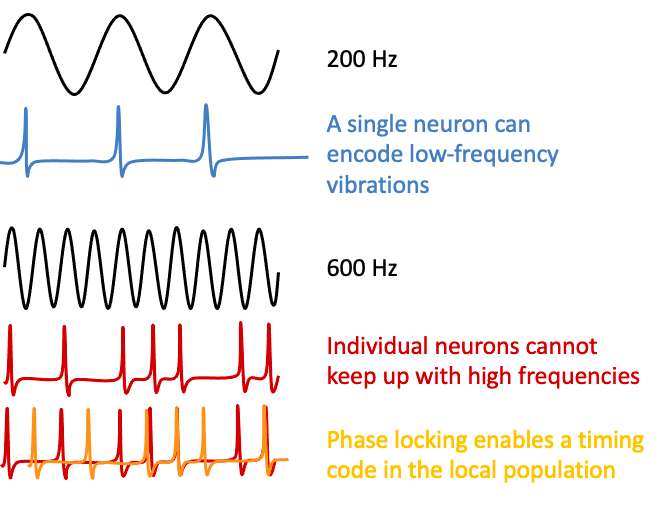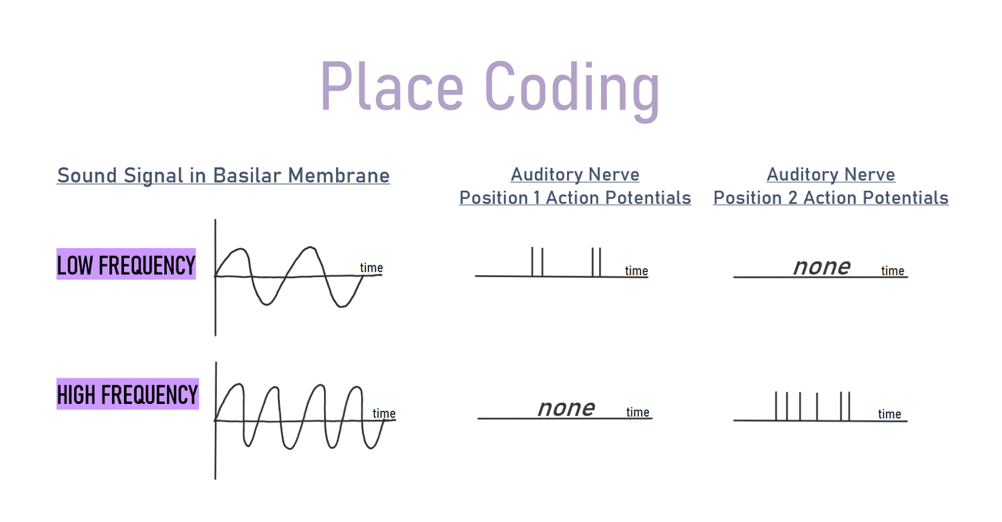The Mechanics of Hearing
52 Place Coding and Time Coding
Learning Objectives
Be able to explain how to encode sound frequency (combination of place and time coding).
Know what role time coding plays when encoding sound.
Be able to describe why place coding is necessary.
Different frequencies of sound waves are associated with differences in our perception of the pitch of those sounds. Low-frequency sounds are lower-pitched, and high-frequency sounds are higher pitched. Several theories have been proposed to account for how the auditory system differentiates various pitches.
First, time coding of pitch perception asserts that frequency is coded by the activity level of a sensory neuron. This would mean that a given hair cell would fire action potentials related to the frequency of the sound wave. Different neurons respond to different cycles of sound; when action potentials fire, they fire at the same place in the cycle. Added together, the population of the different neurons as a whole represents the entire waveform. While this is a very intuitive explanation, we detect such a broad range of frequencies (20–20,000 Hz) that the frequency of action potentials fired by hair cells cannot account for the entire range. There is a point at which a cell cannot fire any faster (Shamma, 2001).

Place coding comes from the fact that different portions of the basilar membrane are more sensitive to sounds of different frequencies. Hair cells that are in the base portion of the basilar membrane would be labeled as high-pitch receptors, while those in the tip of basilar membrane would be labeled as low-pitch receptors (Shamma, 2001).
In reality, both place coding and the timing code contribute to pitch perception. At frequencies up to about 4000 Hz, it is clear that both the rate of action potentials and place contribute to our perception of pitch. However, higher frequency sounds are encoded using place cues (Shamma, 2001).

CC LICENSED CONTENT, SHARED PREVIOUSLY
OpenStax, Psychology Chapter 5.4 Hearing
Provided by: Rice University.
Download for free at http://cnx.org/contents/4abf04bf-93a0-45c3-9cbc-2cefd46e68cc@5.103.
License: CC-BY 4.0
Adapted by: Han Phung

